The AccuPyc gas pycnometer, manufactured by Micromeritics, is globally recognized for delivering the most dependable determinations of true density. It is the preferred choice in laboratories worldwide, with more labs selecting the AccuPyc over any other commercial gas pycnometer.
Renowned for its unmatched accuracy and repeatability, the AccuPyc offers a fast and user-friendly system that meets the needs of operators across various skill levels.
Highlights and Features
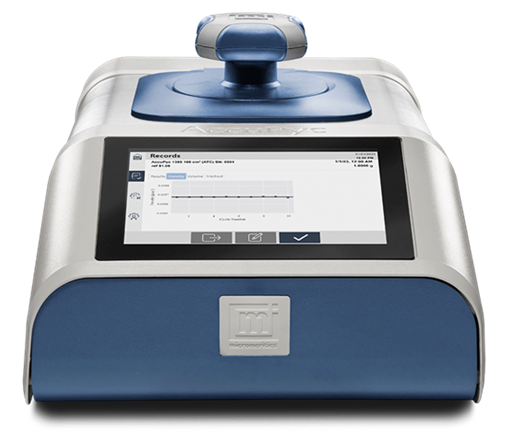
Image Credit: Micromeritics Instrument Corporation
Hinged Self-Aligning Lid
Enables hassle-free operation, ensuring consistent chamber volume for repeatable results
Convenient USB
Enhanced accessibility for data transfer or integration with peripheral devices, featuring additional ports at the instrument's rear.
Intuitive Breeze Interface
Facilitates straightforward sample measurement and result review, with or without a PC.
MIC Net
Promotes seamless collaboration across the laboratory by synchronizing results and methods across AccuPyc instruments. The laboratory network connection allows easy data retrieval and LIMS integration.
On-Board Reference Material Storage
Maintains essential elements in the desired location.
AccuTemp Temperature Control
Ensures density repeatability by precisely controlling temperature within ± 0.025 °C across the range of 4 °C to 60 °C.
Not Just Fast, The Fastest
Shorter run times result from a more stable system that equilibrates quickly and exchanges gas more effectively. Measurements can be finished 20–30% faster than with any other pycnometer.
Not Just Accurate, the Most Accurate
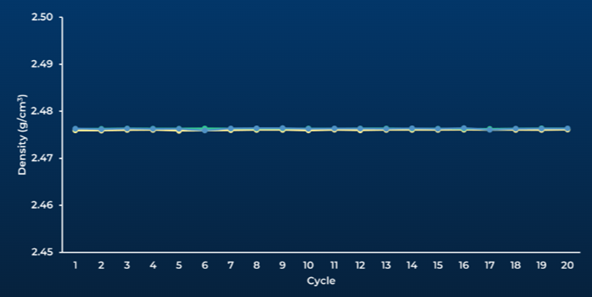
Image Credit: Micromeritics Instrument Corporation
Each component of the AccuPyc design lowers variability and improves accuracy. The most consistent lid closure, precise temperature control, state-of-the-art gas modeling, and more. Better measurements for reliable, accurate results.
Not Just Easy, The Easiest

Image Credit: Micromeritics Instrument Corporation
The lid is hinged and self-aligning, making it simple and error-free for all users. Swing, pivot, and finish. The AccuPyc is the easiest instrument a user will ever add to their lab.
The Widest Range of Measurement Temperatures
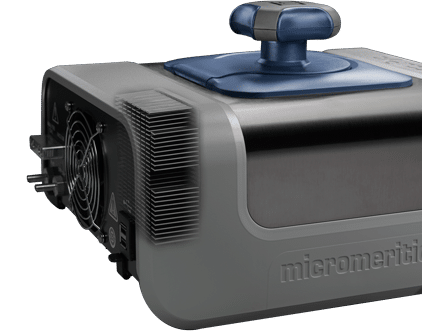
Image Credit: Micromeritics Instrument Corporation
The user can measure density at process-appropriate conditions with precision control ranging from 4 °C to 60 °C. The AccuTemp thermoelectric temperature control system operates silently and is air-cooled.
The Same Result Anytime, Any Place With AccuTemp
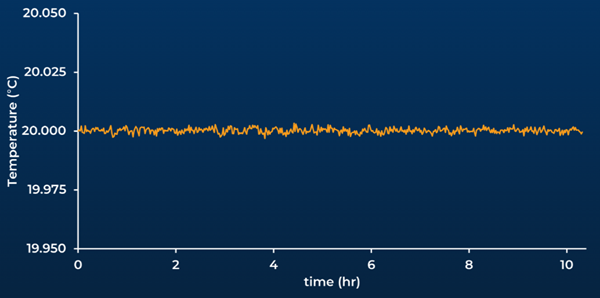
Image Credit: Micromeritics Instrument Corporation
AccuTemp, which ensures temperature stability to ±0.025 °C or better, is a feature of every AccuPyc. The most consistent temperature guarantees the most accurate, consistent density measurement every time.
Unparalleled Measurement Gas Flexibility
Solid density can be measured without extra steps, calibrations, or compromises using nitrogen, air, argon, and other gases. Users can switch gases and save helium when testing non-microporous and non-adsorbing materials. Advanced technology is proven in industry-leading gas adsorption instruments from the Micrometrics sector.
Powder Safe

Image Credit: Micromeritics Instrument Corporation
Using PowderSafe mode when testing light, fluffy powders protects both the user sample and the instrument. Elutriation can be avoided by pressurizing the reference chamber before the sample chamber for measuring fine powders. Select it in the stored method to ensure that you never worry again.
Run, Review, Report – At the Fingertips
The user-friendly Breeze touch interface provides all the essential features at your fingertips.
With a single touch, carry out a measurement, examine previous outcomes, and send a report to LIMS or printing. Remove the PC from the bench to free up space in the lab.
Act as One With MIC NET
Users do not need to worry that the method settings are outdated or try to find a previous result. An instrument-to-instrument network called MIC NET is capable of forward compatibility with the AccuPyc that is currently in the lab, as well as sharing and storing methods and results across devices.

Image Credit: Micromeritics Instrument Corporation
Measure Right, Without Questions

Image Credit: Micromeritics Instrument Corporation
Testing light powders, granules, foams, or slurries requires different operating conditions because different materials require different conditions. Establish the ideal conditions for the process and save them in the Method Library. Remember to utilize this approach the next time, ensuring consistent and accurate measurements by following the correct procedure each time.
Ultimate Volume Flexibility
With straightforward volume insert kits, the AccuPyc accommodates a broad range of measurement volumes without compromising accuracy or adding complexity.
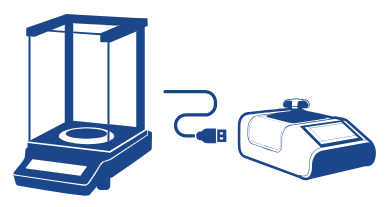
Image Credit: Micromeritics Instrument Corporation
Seamless Device Connectivity
When users connect lab balance straight to the AccuPyc via USB, they can streamline workflow and prevent transcription errors. By transmitting the sample mass directly, a manual step and the possibility of user error are eliminated. The AccuPyc can also be integrated with other lab input devices, such as a keyboard or barcode reader, to facilitate user interaction.

Image Credit: Micromeritics Instrument Corporation
FoamPyc
When determining open and closed cell content, compressibility, and cell fracture with chemically and mechanically formed cellular polymers like PVC, polystyrene, and polyurethane, the FoamPyc methods adhere to ASTM and ISO methodologies.
Scarce Samples
Low measuring volume to conserve valuable resources.
Heterogeneous Materials or Large Pieces
High volume to ensure a representative measurement.
Capabilities
Source: Micromeritics Instrument Corporation
| Cell Volume |
| Nominal |
10 cm3 |
100 cm3 |
| Available Inserts |
0.1 cm3, 1 cm3, 3.5 cm3 |
10 cm3, 35 cm3 |
| Specifications |
| Temperature |
TS: 20 °C ± 0.025 °C
ATC: 4 °C to 60 °C ± 0.025 °C |
| Volume Accuracy |
0.02% |
| Volume Repeatability |
0.01% |
| W x D |
26.5 cm x 43.0 cm |
| Features |
| Hinged Self-Aligning Lid |
| PowderSafe Mode |
| MIC NET data and method synchronization |
| Managed Method Library |
| WiFi Connectivity and 3 USB ports |
| USB Balance Integration |
| Vacuum and Pulse Sample Preparation |
| FoamPyc Methods |
| NIST-Traceable Volume Reference |
Selected International Test Standards
Source: Micromeritics Instrument Corporation
| . |
. |
| ASTM B923 |
Metal Powders |
| ASTM C110 |
Cement |
| ASTM C604 |
Refractory Materials |
| ASTM C799 |
Nuclear Materials |
| ASTM D2638 |
Carbon |
| ASTM D2856 |
Foam |
| ASTM D4892 |
Petroleum |
| ASTM D5550 |
Soil |
| ASTM D5965 |
Coatings |
| ASTM D6093 |
Coatings |
| ASTM D6226 |
Foam |
| ASTM D6761 |
Catalysts |
| ASTM D70 |
Asphalt |
| ASTM D8171 |
Fibers |
| DIN 66137 |
Pycnometry |
| ISO 12154 |
Pycnometry |
| ISO 18753 |
Ceramics |
| ISO 4590 |
Foam |
| ISO 8130 |
Coatings |
| USP <699> |
Pharmaceuticals |